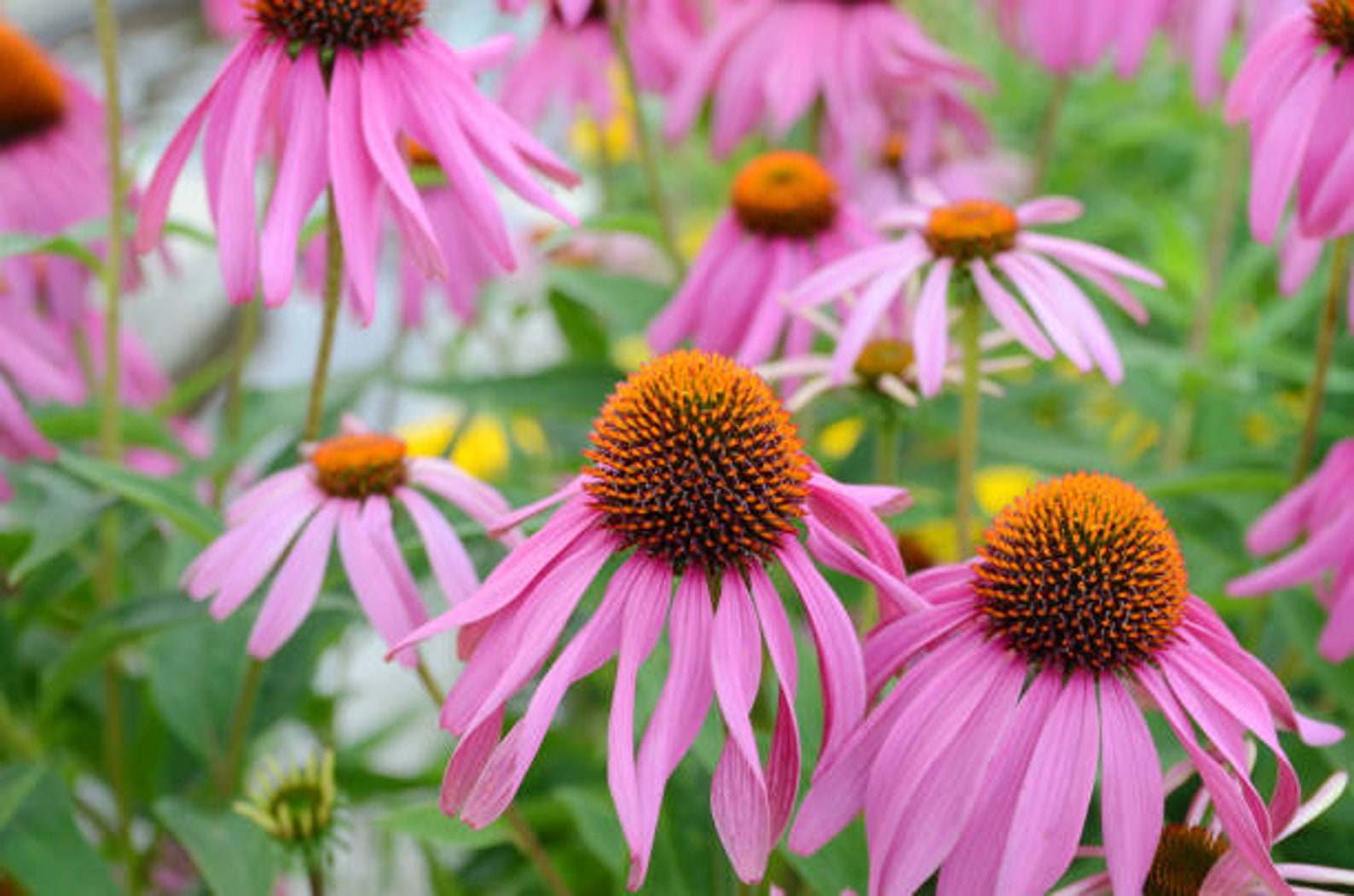


Surface sow or cover no more than one-eighth inch deep.Īlong with starting from seeds, once your plants are established, you can increase your population of them by division or cuttings. For best results, start seeds indoors in flats and transplant prior to the beginning of the growing season. When starting from seed, daily temperature fluctuations or stratification is required to end dormancy. Depending on the location, it blooms throughout the summer and into the early fall. It seems to do equally well in moist or dry soil, and once established, can tolerate drought conditions.

It does well over a broad range of climate zones but does not grow in shady locations. It can now be found in the wild in much of the eastern, southeastern and Midwestern United States as well as in the Canadian Province of Ontario.Īlthough Echinacea became well known and quite popular for its medicinal properties during the later part of the twentieth-century, it is also a wonderful addition to your perennial flower garden. In vitro antiviral activity of Echinaforce, an Echinacea purpurea preparation, against common cold coronavirus 229E and highly pathogenic MERS-CoV and SARS-CoV.Echinacea purpurea (also known as 'Eastern Purple Coneflower' or simply 'Purple Coneflower') is native to Eastern North American and in the sunflower family. Evaluation of echinacea for the prevention and treatment of the common cold: A meta-analysis. Phenetic comparison of seven Echinacea species based on immunomodulatory characteristics. Efficacy of an extract of North American ginseng containing poly-furanosyl-pyranosyl-saccharides for preventing upper respiratory tract infections: A randomized controlled trial. Echinacea for preventing and treating the common cold. Echinacea - a source of potent antivirals for respiratory virus infections. Coronavirus research: Could echinacea act as a prophylaxis against the SARS-Cov-2 coronavirus? More research warranted (2020).raw materials and finished products by high-performance liquid chromatography with ultraviolet detection: Single-laboratory validation matrix extension. Determination of major phenolic compounds in Echinacea spp. Echinacea for treating the common cold: A randomized trial. You can learn more about how we ensure our content is accurate and current by reading our editorial policy. We link primary sources - including studies, scientific references, and statistics - within each article and also list them in the resources section at the bottom of our articles. Medical News Today has strict sourcing guidelines and draws only from peer-reviewed studies, academic research institutions, and medical journals and associations. There is no evidence that Echinacea or any other ingredient in herbal medicine can prevent or cure severe respiratory illnesses, including COVID-19. The scientists who issued the warning also caution that the product could be dangerous to people with autoimmune conditions. The study has also not been peer-reviewed, and it does not, by any means, show that Echinacea can help cure COVID-19. Moreover, the researchers had only tested the product on cell lines and virus particles, not people. However, other scientists warn that this limited investigation did not look into the effect of the product on the virus that causes coronavirus disease 19 (COVID-19). Meanwhile, a study from 2020 indicates that a commercial product containing Echinacea extract could help prevent severe respiratory diseases caused by coronaviruses.

However, they point out that the lack of standardization among Echinacea products may keep people from finding effective remedies. In 2011, the authors of a review found that some extracts of Echinacea may help treat viral respiratory infections. Researchers have yet to prove that Echinacea can reduce the impact of a cold, and there is very little evidence that it can help with other illnesses.


 0 kommentar(er)
0 kommentar(er)
